TEXTILE EXPANSION COMPENSATORS 100°C TO 1300°C
Since expansion compensators are fundamental elements for the proper functioning of your processes, we make sure that the ones we offer you:
- Absorb expansion movements between flanges (due to their great flexibility)
- Ensure a good seal against air, gas, smoke, etc.
- Insulate the installation to limit thermal losses and protect personnel
Optimal constructions for MAXIMUM gain…. Depending on the elements of your application, our design office will propose the most suitable design, in order to obtain an optimal cost of use.
Moderate constraints
APPLICATIONS <300 ° C
The principle is to offer you a product which is:
- Easy to use
- Economical (simplified design due to low expansion movements)
In this temperature range, the thicknesses of the compensators vary between 1 and 6 mm.
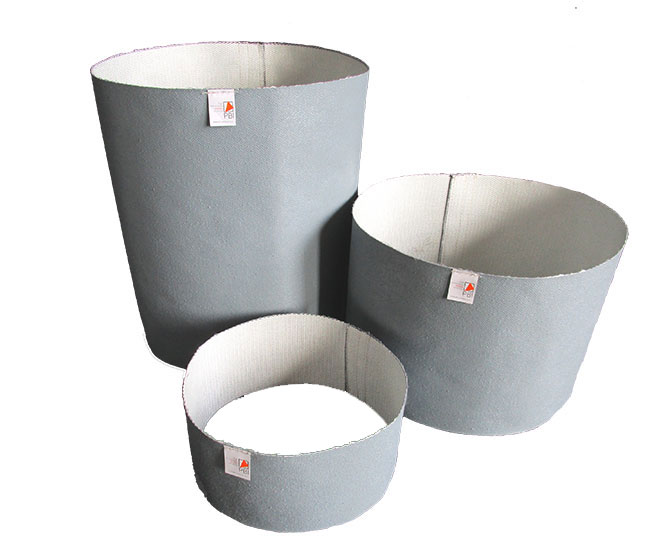
Closed interlocking compensator
- Possibility of including screw fixing collars
- Pre-packaged
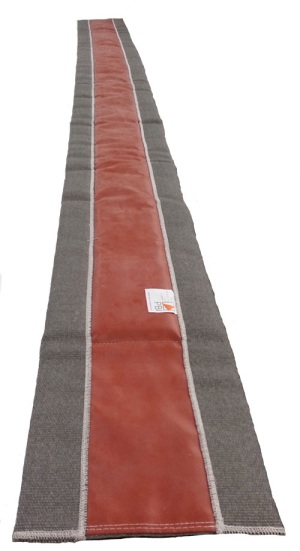
Open compensator, making it easier to install if there is a deflector.
- Glue cartridge included to provide you with a complete kit
- Cutting on site possible for adaptation to different installations
- Reinforced edges for protection at the bindings
Strong constraints
APPLICATIONS FROM 300°C TO 500°C
We plan not only to be watertight, but also to achieve:
- Thermal insulation, with insulators offering good resistance to settling.
- A chemical barrier (viton, PTFE) in the presence of corrosive fluid, in order to increase the life of the compensator.
- Protection against abrasion, in the presence of abrasive fluid, by the addition of a stainless steel cloth.
- A reinforcement at the level of the bindings, by the addition of specific fabrics.
In this temperature range, the thicknesses of the compensators vary between 6 and 25 mm.
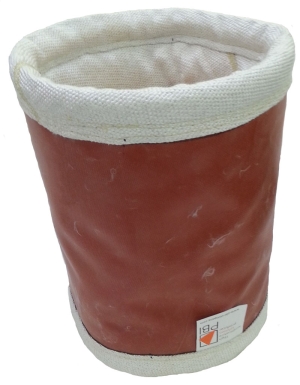
Insulated interlocking compensator
- Possibility of including screw fixing collars
- Reinforced edges for protection at the bindings
- Pre-packaged
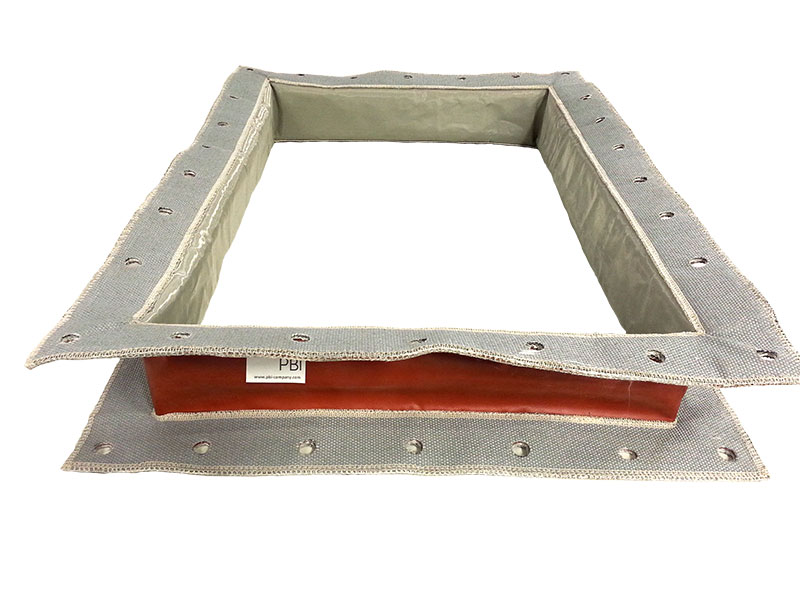
Compensator with pre-drilled flanged edges
- Insulated flanged edges to optimise the life of the compensator
- Pre-packaged
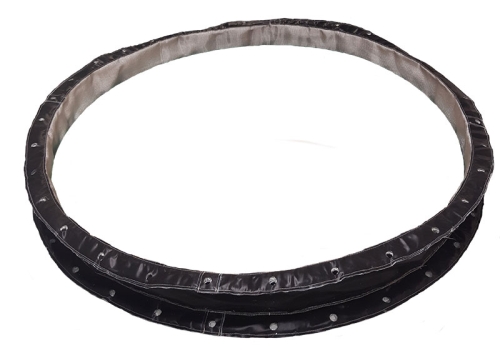
Compensator for corrosive or abrasive fluids
- Abrasive fluids: addition of a stainless steel cloth on the inside
- Corrosive fluids: insertion of a chemical barrier (Viton, PTFE, etc.)
- Pre-packaged
Intense Constraints
Applications > 500°C
We have to reinforce all the barriers but also, given the necessary thickness greater than 25 mm, to integrate insulating blankets. At these temperatures, the mechanical stresses due to the expansion movements are greater. We therefore recommend:
- Using dense insulation, limiting the settling of the fibre and therefore of the thermal leaks which are detrimental to the tightness of the assembly.
- To use reinforced fabrics and/or stainless steel fabrics for the covering of the mat, therefore prolonging its lifespan.
High-performance compensator integrating mat + band
![]() Sealing strip for weather protection
Sealing strip for weather protection
- Extra length and glue cartridge included => waterproofing guaranteed even at the junction
![]() Soft insulation mat with good resistance to settling
Soft insulation mat with good resistance to settling
- If abrasive elements are present, add a metallic protection
- Depending on the dimensions, supply possible in several parts with strap/buckle junction (easy handling, cohesion between the different parts)
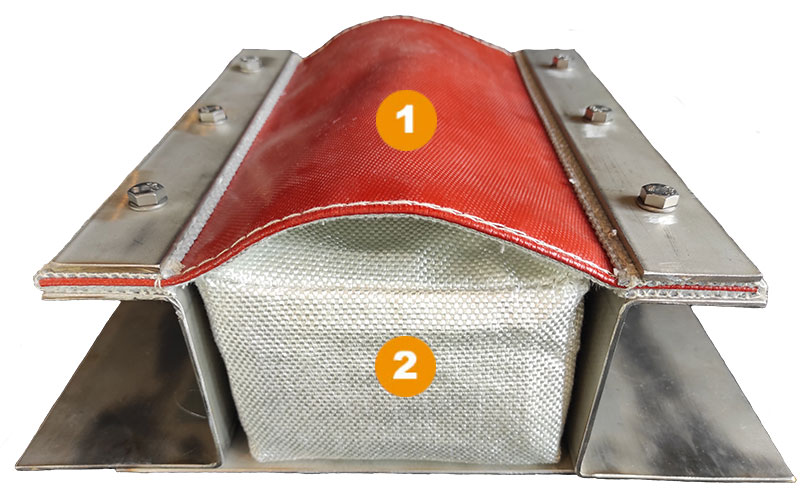
Characterisation of compensators
Here we have presented some typical constructions of the compensator range, it being understood that we will study all your requests on the basis of the criteria below:
-
- Working temperatures (100°C to 1300°C)
- Fluid (air, air + dust, fumes, charged air (specify the compounds))
- Pressure (maximum admissible 200 mbar)
- Dimensions (unlimited, the largest compensators can be made in several parts)
And the following will always be taken into account:
-
- The different expansion movements: axial compression, radial displacement or Torsion
- The designs of your installations: Interlocking, Flanged edges, mixed or even with the addition of insulating blankets (generally for applications > 500°C)


